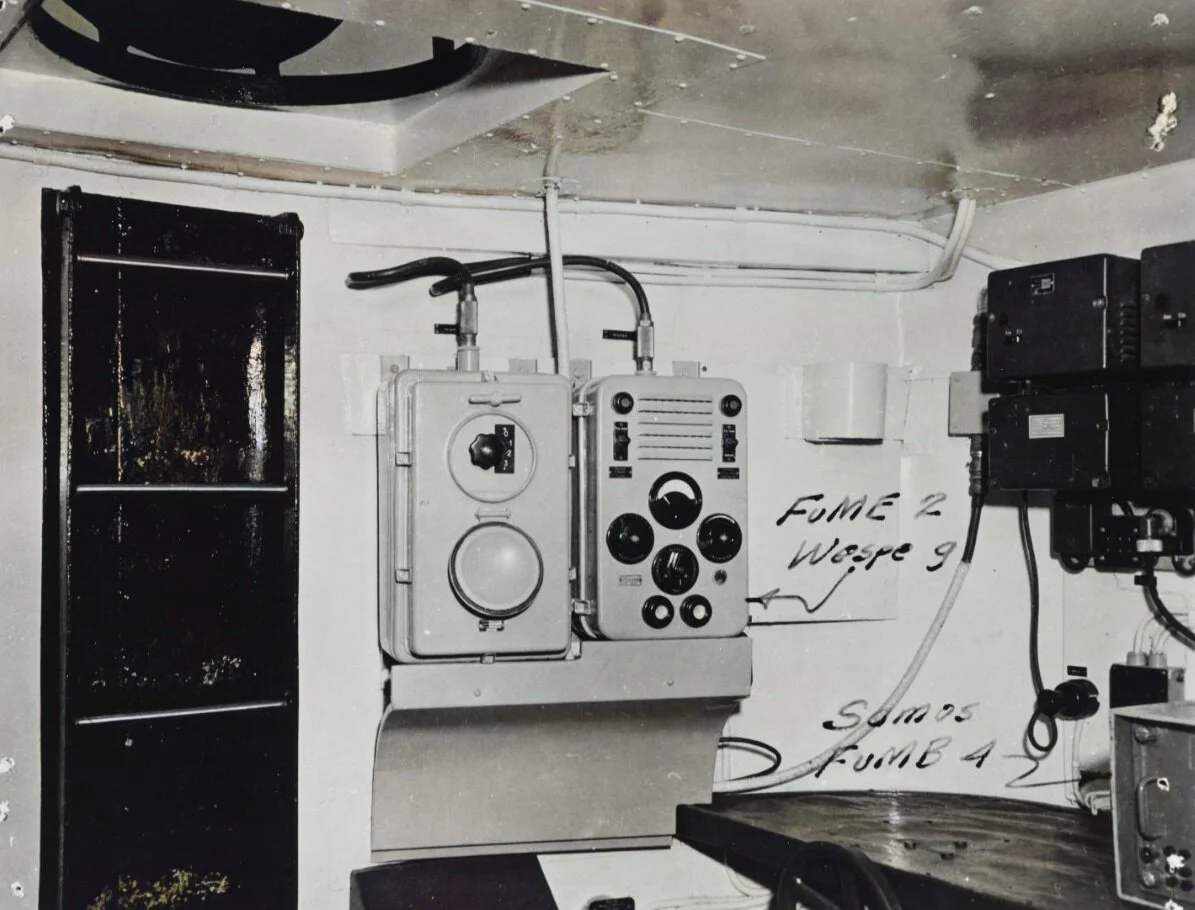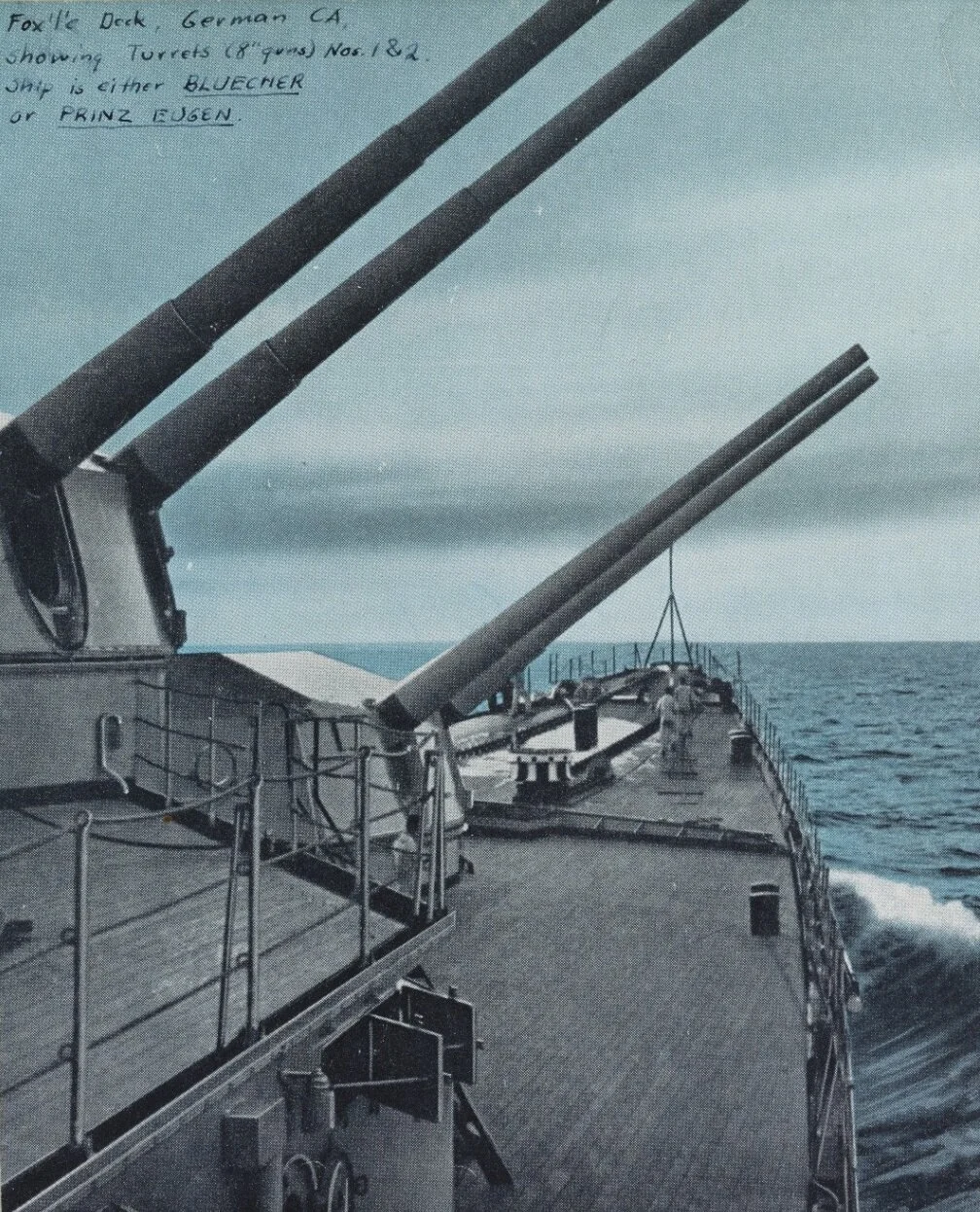Friday, May 23
The Germans are Spotted
Able Seaman Alfred R Newall stands watch on the open bridge of HMS Suffolk as she patrols the entrance to the Denmark Straight (Royal Navy)
At 0630 in Washington a telegram arrived on the desk of President Franklin Roosevelt in the Oval Office from Winston Churchill. In it the Prime Minister requested that despite the neutrality of the United States, American ships spotting the German task force could still relay their positions to the Royal Navy. Roosevelt acquiesced, thus adding the eyes of the US Navy to the hunt for the Bismarck and her consort.
“Give us the news and we will finish them off.”
Meanwhile the Germans continued their course toward the Denmark Straight, and at 1200 Admiral Lutjens sounds battle alert as they approach the entrance. He has not yet sighted any enemy vessels, but is fully expecting some form of British picket guarding the entrance. Despite this, however, he does not order the activation of the task force’s radar, leaving the units on both Bismarck and Prinz Eugen dormant for the time being.
A report arrives from OKM at 1500 with unwelcome news: due to the poor weather conditions, the Luftwaffe’s long range reconnaissance aircraft are unable to fly ice spotting missions over the straight, leaving the task force to rely on their own lookouts and instruments. Accordingly, at 1830 Admiral Lutjens orders activation of his radar array as his ships enter the icy straight.
Inside the Prinz Eugen’s radar compartment (US Navy)
At 1910 the alarm sounds aboard the German warships and the men rush to their battle stations. An unidentified ship had been spotted to starboard, likely a British picket. This is confirmed twn minutes later, as they identify her as the County Class Cruiser HMS Suffolk, a part of Admiral Wake-Walker’s 1st Cruiser Squadron.
Aboard Suffolk they too identify the enemy task force, and promptly radio its position to the Admiralty. The signal makes it to London, but is not picked up by Admiral Tovey and the Home Fleet. As soon as they transmit they take evasive action, as the Germans had appeared from the fog well within range. Admiral Lutjens signals to Prinz Eugen that she is authorized to engage, but the rolling banks of fog make it impossible to line up a shot. Having heard the transmission from Suffolk, Admiral Wake-Walker is moving at best speed to join her with his flagship, the HMS Norfolk.
“Make to Admiralty, C in C Home Fleet: Emergency. One battleship and one cruiser.”
British sailors on the bridge of HMS Suffolk (Royal Navy)
To the south, Admiral Holland aboard HMS Hood also receives the transmission, and makes some quick calculations. He then signals to Prince of Wales to change course. The Battlecuiser Squadron is going to make for the southern end lf the Denmark Straight, and if all goes as planned Holland’s ships will come out of the darkness with the Germans against the rising sun tomorrow morning, as his ships cross the T on them.
Crossing the T is an important naval maneuver when fighting with guns. It involves positioning one’s ships in a position to “cross the T” on an enemy ship, allowing the use of a full broadside against an enemy that can only fire her forward weaponry. In this position, as well as concealed by the darkness, Holland hopes to be able to bring the Germans to battle and quickly destroy them.
Prinz Eugen (or possibly her sister Blucher)’s forecastle with main battery in firing position (US Navy)
At 2030 the Germans fire their first rounds in anger, as Admiral Wake-Walker aboard Norfolk, disoriented by the heavy fog, suddenly emerges just off the Bismarck’s port, and is immediately fired upon. The 15 inch shells straddle the cruiser, which quickly disappears back into the fog bank after the close encounter. The concussion from the massive guns has an unexpected effect, however, as it disables the search radar on the German flagship. In response, Admiral Lutjens signals for Prinz Eugen to move to the head of the column, as her radar remains functional.
This too almost ends in disaster, however, as then the Prinz Eugen attempts to move around the battleship, Bismarck’s steering gear temporarily fails, almost causing a collision. Also while doing this, Bismarck is made aware the the cruiser has been picking up transmissions from OKM which have not been received on the flagship. No new information is gained, but it is still a worrying prospect.
HMS Hood underway in heavy seas (Royal Navy)
At 2300 Admiral Holland issued his instructions to Captain Leach aboard Prince of Wales: tomorrow’s attack is to be commenced with both British ships rapidly closing on the enemy, marking each other’s shots to walk in their fire. He intends to have Norfolk and Suffolk engage Prinz Eugen from the north while his battleships engage Bismarck, but fearing breaking radio silence he does not transmit any orders to this effect to Wake-Walker. Far to the south more movement takes place, as at 2300 Admiral Somerville at Gibraltar is ordered to sortie out with his Force H to reinforce convoy escorts, as an insurance policy against a sucessful German breakout.
As the evening goes on, at 2200 Bismarck suddenly swings about to the north and attempts to engage the British cruisers tailing him, but thanks to the effective radar aboard they are able to anticipate the move and pull back out of range, causing Bismarck to return to his original course. The British remain throughout the night at a shadowing distance of some 10 miles, and efforts by Lutjens to escape with smokescreens at 2350 are unsuccessful. As the clock passes into May 24 the Germans remain firmly under the eyes of British radar.
German task force enters the Denmark Straight
1st Cruiser Squadron sights the German task force, and begins to shadow
Germans attempt to shake their pursuers as they continue southward
Hood and Prince of Wales change course to speed for the Denmark Straight
Tovey and the Home Fleet are still not aware of the sighting of the Germans





